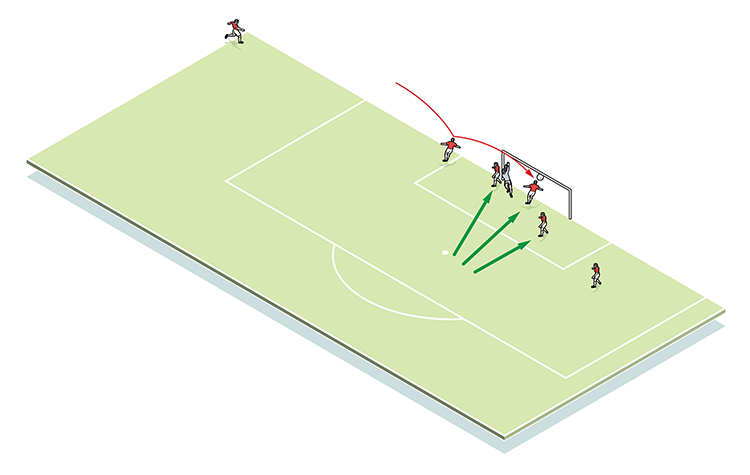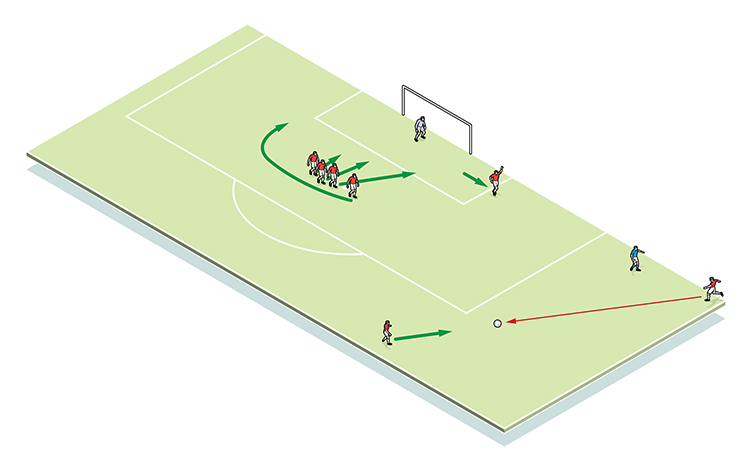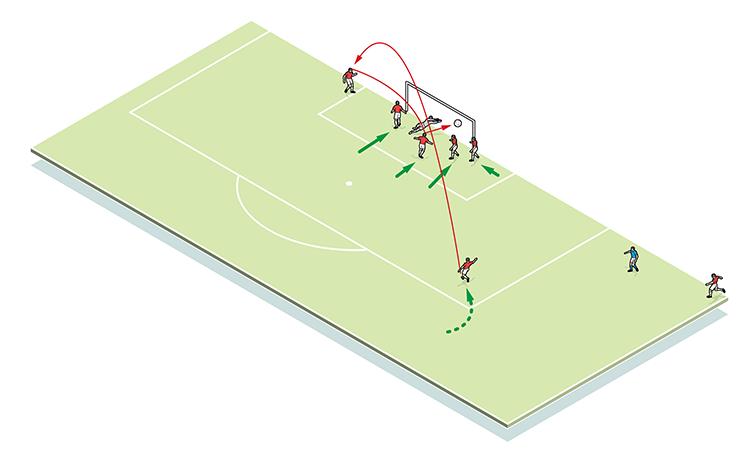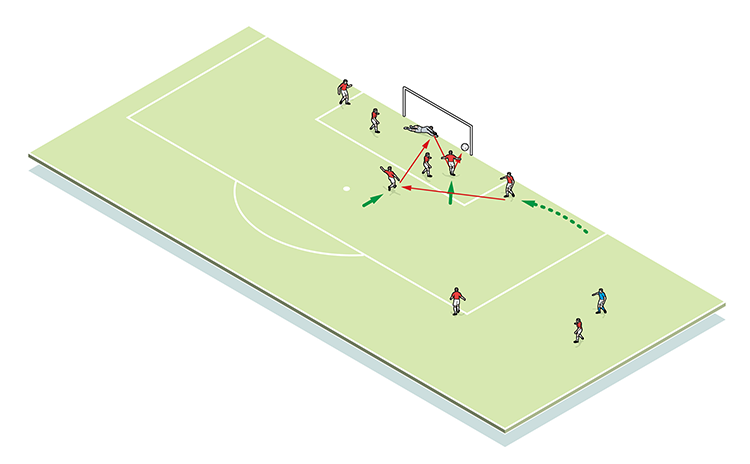You are viewing 1 of your 1 free articles
Corner-kick routine
This session looks at the art of the corner kick routine.
| Area | Final third |
| Equipment | Balls, goal |
| No. of Players | 10 |
| Session Time | Session 45mins, game 20mins |
This session looks at the art of the corner kick routine.
Set pieces play a vital role in deciding the outcomes of football matches, so it’s crucial for sides to have rehearsed and prepared routines in order to make the most of these unique opportunities.
Corner kick routines are particularly important, and the outlined session presents a firm template on which teams can build familiarity and expertise.
We will start this session unopposed and at walking pace, before gradually stepping up the tempo and adding passive defenders.
What do I get the players to do?
We set up with a corner kicker, an attacking player hovering around the edge of the six-yard box, and four attackers 15 yards out, positioned in a line to the centre right of the goal. There is also a keeper in place.
The corner taker drives the ball in to the player on the angle of the six-yard box. The receiver can either approach late for a near-post header or wait on the edge of the six-yard box and flick the ball on.
Three of the inrushing forwards head towards the goal ready for the flick – albeit by staggering their runs – whilst the player furthest left makes an arched run behind his team mates to receive any ball that ends up at the far post (1a/1b).
1a

1b

In the next set-up, a defender is in place to prevent the flicked corner, while a midfielder provides a short corner option (2a). The corner taker feeds this midfielder on the corner of the 18-yard box, and a whipped ball in across the face of goal invites attackers to score (2b).
2a

2b

How do I progress the session?
To progress, we add a defender and a deep midfielder. The attacking midfielder comes to receive a short corner - he stops the ball dead and the corner taker, having followed his pass, now feeds the deep midfielder on the edge of the box.
The corner taker continues his run looking to drag the defender with him, leaving the midfielder a free run inside the box (3a). This player receives the pass from his team mate and crosses (3b).
3a

3b

Once we’re happy with the execution of these moves, we may add further passive defenders.
What are the key things to look for technically/tactically?
Delivery is vital in any set piece, as is player awareness. Tactically, players must know where and when to go, plus have the ability to stagger their runs.
How do I put this into a game situation?
We play a standard game, halting play every few minutes to award corners or free-kicks, thus manufacturing these rehearsed tactical scenarios. Players must react quickly for the set play that has been called.
Related Files
Editor's Picks
Intensive boxes drill with goals
Penetrating the final third
Creating and finishing
My philosophy
Pressing initiation
Compact team movement
Defensive organisation
Back three tactics
Counter-pressing as an offensive weapon
Coaches' Testimonials

Alan Pardew

Arsène Wenger

Brendan Rodgers

Carlos Carvalhal

José Mourinho

Jürgen Klopp

Pep Guardiola

Roy Hodgson

Sir Alex Ferguson

Steven Gerrard
Coaches' Testimonials

Gerald Kearney, Downtown Las Vegas Soccer Club

Paul Butler, Florida, USA

Rick Shields, Springboro, USA

Tony Green, Pierrefonds Titans, Quebec, Canada
Join the world's leading coaches and managers and discover for yourself one of the best kept secrets in coaching. No other training tool on the planet is written or read by the calibre of names you’ll find in Elite Soccer.
In a recent survey 92% of subscribers said Elite Soccer makes them more confident, 89% said it makes them a more effective coach and 91% said it makes them more inspired.
Get Monthly Inspiration
All the latest techniques and approaches
Since 2010 Elite Soccer has given subscribers exclusive insight into the training ground practices of the world’s best coaches. Published in partnership with the League Managers Association we have unparalleled access to the leading lights in the English leagues, as well as a host of international managers.
Elite Soccer exclusively features sessions written by the coaches themselves. There are no observed sessions and no sessions “in the style of”, just first-hand advice delivered direct to you from the coach.








